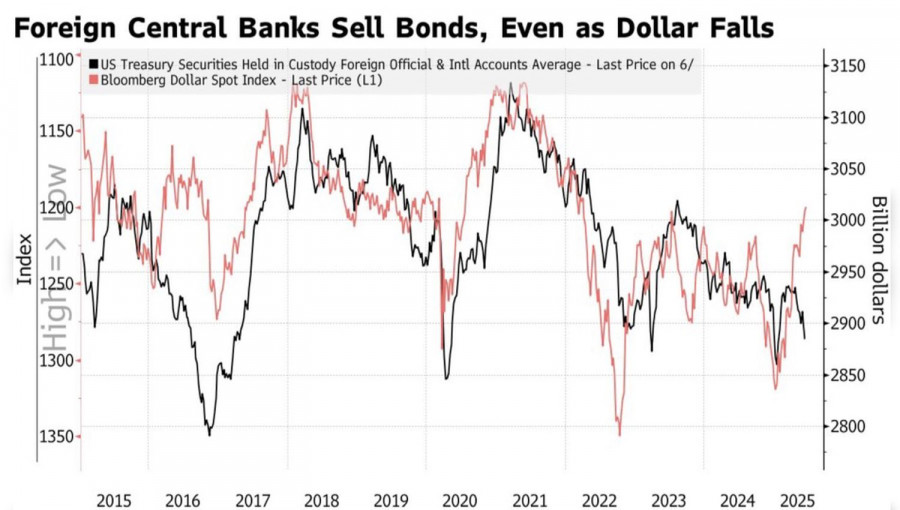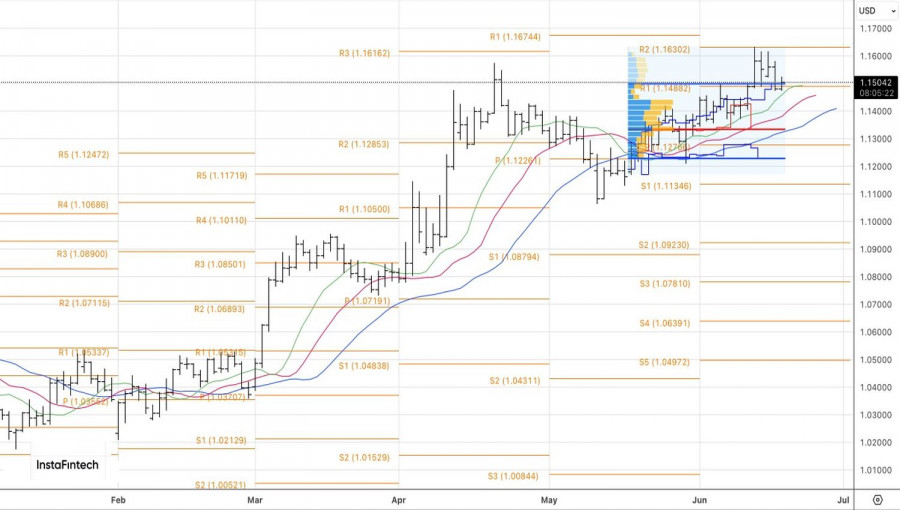Vea también


 19.06.2025 12:42 AM
19.06.2025 12:42 AMThe U.S. dollar has become an outcast—not just globally, but even at home. The White House supports everything from stock indices to Bitcoin and even gold through policy uncertainty. Yet Donald Trump and his team are ignoring the over 9% drop in the USD Index since the start of the year. The last time the greenback fell this fast was in 2010 when the Federal Reserve aggressively printed money to help the U.S. economy recover from the global financial crisis.
U.S. officials, including the President, continue to talk about a strong dollar—just like their predecessors—but they do nothing to stop its decline. There are growing rumors that the U.S. needs a weaker dollar to restore manufacturing capacity and improve its trade balance. Washington is reportedly pressuring other countries in trade negotiations to allow their currencies to strengthen. This strategy is risky.
After years of budget deficits, the U.S. government now requires around $4 trillion annually to fund its operations. This gap is being filled through the issuance of Treasury securities, which foreign investors have traditionally purchased. However, if the U.S. dollar weakens against their home currencies, these investors may lose interest in treasuries and start selling them off. This creates a vicious cycle of dumping all things American—a pattern visible in the divergence between the USD Index and foreign-held U.S. Treasury reserves.
A hawkish surprise from the Fed—something EUR/USD bulls are wary of—might sweeten the pill for the dollar, but it won't be enough to break the upward trend in the main currency pair. Hedge funds and asset managers understand this all too well, and they continue to increase their net short positions on the greenback.
The U.S. dollar is gaining support due to rising geopolitical tensions in the Middle East. No, the greenback hasn't regained its safe-haven status. Investors fled from it, seeing the U.S. as the root of all global troubles. However, this time, the issues stem from Israel and Iran—outside of the U.S. So why not, out of old habit, buy the dollar again?
It's also worth noting that rising oil prices could stoke inflation not just in the U.S. but also in the eurozone. As a result, the European Central Bank may be forced to end its monetary easing cycle sooner than markets currently expect—something that would benefit the euro.
Technical Picture: EUR/USD Daily Chart
From a technical standpoint, EUR/USD shows a tug-of-war between bulls and bears at the upper boundary of its fair value range of 1.123–1.150. If bulls hold this level, buying the pair in the market becomes viable again. Conversely, if the euro consolidates below 1.150, it may signal an opportunity to initiate short positions.
You have already liked this post today
*El análisis de mercado publicado aquí tiene la finalidad de incrementar su conocimiento, más no darle instrucciones para realizar una operación.



